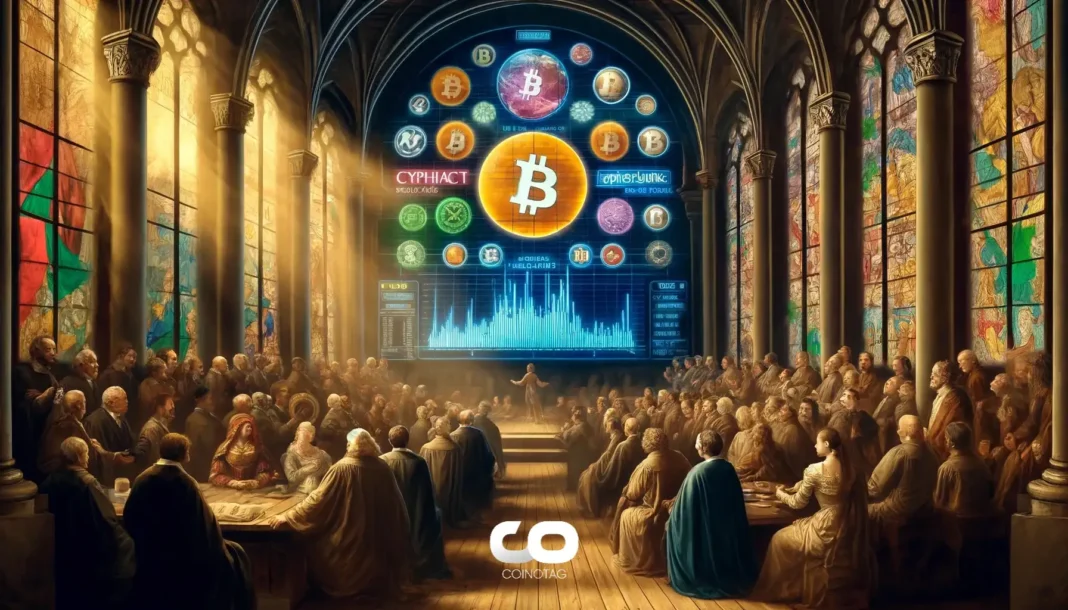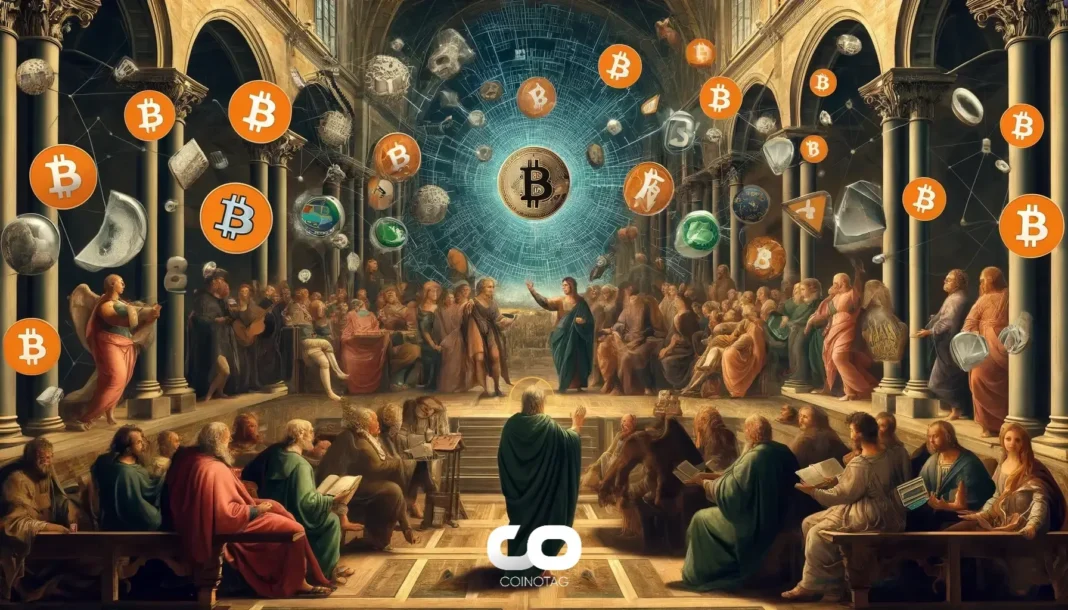| COINOTAG recommends • Exchange signup |
| 💹 Trade with pro tools |
| Fast execution, robust charts, clean risk controls. |
| 👉 Open account → |
| COINOTAG recommends • Exchange signup |
| 🚀 Smooth orders, clear control |
| Advanced order types and market depth in one view. |
| 👉 Create account → |
| COINOTAG recommends • Exchange signup |
| 📈 Clarity in volatile markets |
| Plan entries & exits, manage positions with discipline. |
| 👉 Sign up → |
| COINOTAG recommends • Exchange signup |
| ⚡ Speed, depth, reliability |
| Execute confidently when timing matters. |
| 👉 Open account → |
| COINOTAG recommends • Exchange signup |
| 🧭 A focused workflow for traders |
| Alerts, watchlists, and a repeatable process. |
| 👉 Get started → |
| COINOTAG recommends • Exchange signup |
| ✅ Data‑driven decisions |
| Focus on process—not noise. |
| 👉 Sign up → |
-
The recent repeal of the controversial SAB 121 rule marks a significant turning point for the cryptocurrency market, allowing banks to custody Bitcoin legally.
-
This regulatory change is expected to pave the way for increased institutional interest and investment in digital assets, positioning Bitcoin as a viable option for traditional finance.
-
“The market is not pricing this in. In Davos this week, bank executives were attending crypto events and expressing excitement about regulatory clarity,” noted Anthony Scaramucci from SkyBridge Capital.
This article explores the implications of the rescinded SAB 121 rule, which now allows banks to custody Bitcoin, enhancing institutional crypto adoption.
Impact of SAB 121 Repeal on Institutional Crypto Adoption
The rescission of SAB 121 signifies a critical shift in the regulation of digital assets, primarily impacting how banks interact with cryptocurrencies. Previously, the rule classified digital assets as liabilities, complicating accounting practices for banks looking to engage in crypto custody. As a result, institutions faced disproportionate requirements to hold capital against these assets, restricting their ability to securely manage crypto for clients.
Shifting Landscape in Cryptocurrency Regulations
This regulatory development comes at a time when the crypto landscape is evolving rapidly. With increasing calls for clearer regulations from the financial industry, the revival of bank interest signals a maturation in the sector. As reiterated by Teddy Fusaro, president at Bitwise Invest, the previous rule effectively barred banks from the market, which hampered broader adoption by institutional players.
Broader Implications for Financial Institutions
With banks now allowed to custody Bitcoin, several financial institutions are likely to reconsider their positions on digital currencies. This decision has prompted executives to engage more actively in conversations surrounding crypto at global forums, such as the World Economic Forum in Davos. Scaramucci observed that bank executives expressed notable excitement about the easing of regulatory barriers, which could lead to increased participation from traditional finance in the crypto sector.
| COINOTAG recommends • Professional traders group |
| 💎 Join a professional trading community |
| Work with senior traders, research‑backed setups, and risk‑first frameworks. |
| 👉 Join the group → |
| COINOTAG recommends • Professional traders group |
| 📊 Transparent performance, real process |
| Spot strategies with documented months of triple‑digit runs during strong trends; futures plans use defined R:R and sizing. |
| 👉 Get access → |
| COINOTAG recommends • Professional traders group |
| 🧭 Research → Plan → Execute |
| Daily levels, watchlists, and post‑trade reviews to build consistency. |
| 👉 Join now → |
| COINOTAG recommends • Professional traders group |
| 🛡️ Risk comes first |
| Sizing methods, invalidation rules, and R‑multiples baked into every plan. |
| 👉 Start today → |
| COINOTAG recommends • Professional traders group |
| 🧠 Learn the “why” behind each trade |
| Live breakdowns, playbooks, and framework‑first education. |
| 👉 Join the group → |
| COINOTAG recommends • Professional traders group |
| 🚀 Insider • APEX • INNER CIRCLE |
| Choose the depth you need—tools, coaching, and member rooms. |
| 👉 Explore tiers → |
Market Response and Future Outlook
The market’s response to this major regulatory shift remains to be seen, but analysts suggest that institutional investors may begin to see Bitcoin as a more accessible asset class. Jake Chervinsky, CLO at Variant, highlighted the potential for renewed interest in cryptocurrencies as barriers fall, stating, “For years, federal agencies tried to shut crypto out of the financial system through efforts like Chokepoint 2.0.” This indicates a growing optimism among market participants about the future of cryptocurrencies in the mainstream financial ecosystem.
Conclusion
The repeal of the SAB 121 rule represents a landmark development that will likely reshape the interaction between banks and cryptocurrencies. As financial institutions begin to embrace their role in the crypto ecosystem, the landscape may become more favorable for investment and innovation. The implications for the future of digital assets are vast, and stakeholders must remain vigilant as this new era unfolds.
| COINOTAG recommends • Exchange signup |
| 📈 Clear interface, precise orders |
| Sharp entries & exits with actionable alerts. |
| 👉 Create free account → |
| COINOTAG recommends • Exchange signup |
| 🧠 Smarter tools. Better decisions. |
| Depth analytics and risk features in one view. |
| 👉 Sign up → |
| COINOTAG recommends • Exchange signup |
| 🎯 Take control of entries & exits |
| Set alerts, define stops, execute consistently. |
| 👉 Open account → |
| COINOTAG recommends • Exchange signup |
| 🛠️ From idea to execution |
| Turn setups into plans with practical order types. |
| 👉 Join now → |
| COINOTAG recommends • Exchange signup |
| 📋 Trade your plan |
| Watchlists and routing that support focus. |
| 👉 Get started → |
| COINOTAG recommends • Exchange signup |
| 📊 Precision without the noise |
| Data‑first workflows for active traders. |
| 👉 Sign up → |
| COINOTAG recommends • Members‑only research |
| 📌 Curated setups, clearly explained |
| Entry, invalidation, targets, and R:R defined before execution. |
| 👉 Get access → |
| COINOTAG recommends • Members‑only research |
| 🧠 Data‑led decision making |
| Technical + flow + context synthesized into actionable plans. |
| 👉 Join now → |
| COINOTAG recommends • Members‑only research |
| 🧱 Consistency over hype |
| Repeatable rules, realistic expectations, and a calmer mindset. |
| 👉 Get access → |
| COINOTAG recommends • Members‑only research |
| 🕒 Patience is an edge |
| Wait for confirmation and manage risk with checklists. |
| 👉 Join now → |
| COINOTAG recommends • Members‑only research |
| 💼 Professional mentorship |
| Guidance from seasoned traders and structured feedback loops. |
| 👉 Get access → |
| COINOTAG recommends • Members‑only research |
| 🧮 Track • Review • Improve |
| Documented PnL tracking and post‑mortems to accelerate learning. |
| 👉 Join now → |







